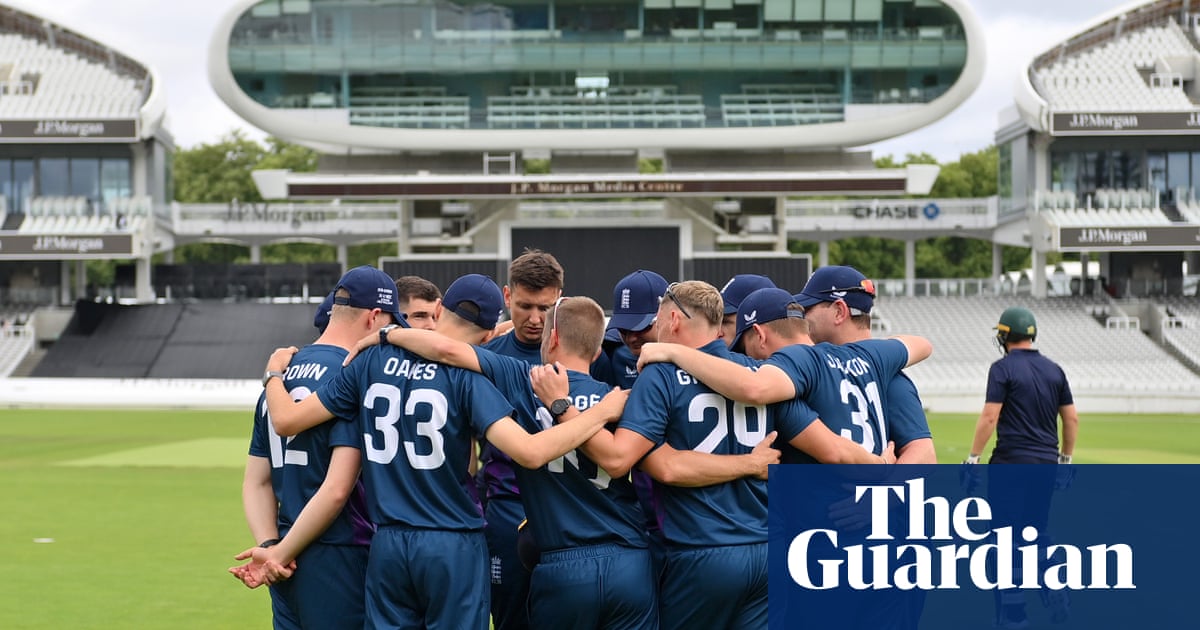The England and Wales Cricket Board has been accused of making disability cricket less inclusive, while several players have already quit in protest after the governing body “streamlined” three England teams into one mixed disability setup.
The world’s first ever pan-disability international series – which means open to all disabilities – will take place in England against India in June and July. The format mirrors England’s domestic Disability Premier League in bringing together the existing Physical Disability (PD), Learning Disability (LD) and Deaf teams to play as one group.
But players are concerned the move will reduce opportunities for disabled cricketers at the elite level, and will favour the most able among them. Two deaf players have already withdrawn themselves from selection, after the change was announced to all players in December with, they say, no consultation.
Liam Thomas, who was wicketkeeper for the England PD team until his retirement in January, said he was concerned about the changes, although he added that there was excitement among some players about the chance to play an international match at Lord’s this summer as part of the pan-disability series as well as a double-header with the England Women’s team which will be screened live on Sky Sports.
“It is a great opportunity. And in theory, it works,” Thomas said. “The ECB will have one cost, one tour fee, one set of expenses, one set of coaching staff – it ticks all the right boxes. But when you start breaking it down and finding out people’s concerns, you get down to the nitty gritty.
“How are they going to communicate? How is each impairment going to be impacted? If you’ve only got five PD spots in the England team, how can you grow physical disability cricket and grow our pool of players? It’s limiting opportunities.”
Communication between deaf and hearing players is a big issue. While the ECB is introducing sign language training during squad weekends, one England Deaf cricketer claimed this would have little impact. “It reduces BSL [British Sign Language], a rich language, into a tick-box exercise. You wouldn’t say, ‘a French player has joined us but it’s OK because we’ve all learned how to say bonjour’,” he said.
“Deaf cricket enables us all to play our best cricket, because it removes all of the deafness out of it. Pan-disability cricket highlights it, makes it a difference.
“We’ve hammered home so many different accessibility problems with the DPL, and the ECB haven’t done anything about it.”
The player in question has opted out of the India series.
While there are rules in place to prevent teams in the DPL from being selected entirely from one disability group, one figure close to the national setup told the Guardian that there were concerns among the coaching staff that players from the deaf and learning disability groups would be sidelined in the India series.
“In the last three DPL finals, the 12th man on each team has always been a learning disability player,” they said. “You have to have four overs bowled by each group – the LD and the Deaf players always bowl four, and then you have 12 overs bowled by the PD guys.” All four captains in the 2024 Disability Premier League were from the PD group, while PD player Callum Flynn will captain England against India.
after newsletter promotion
New research published jointly by Bournemouth University, Canterbury Christ Church University and the University of Waikato in New Zealand argues that the Disability Premier League represents a “contrived lumping of athletes together based on ‘difference’ [which] has made disability cricket more exclusionary”.
Dr Ben Powis, Senior Lecturer in Sport at Bournemouth University and lead author on the report, criticised the ECB’s plans. “Streamlining these squads means that there will be players with certain impairments who will now be frozen out of international cricket,” he said. “The ECB have created a system for people to fail in.”
The ECB says its aim is to encourage more countries to field disability sides, paving the way for a Disability World Cup, but players have questioned this, especially given that no other nation currently plays pan-disability cricket.
“It’s colonial, in a way,” one England Deaf player said. “The framing of the messaging around it is, ‘We’re ahead of the world, we’re the first, we’re ones that decide where this is going’. But Deaf cricket is thriving internationally, and it’s the ECB that is falling behind once again.”
An ECB spokesperson said: “This summer we’ve introduced 17 hours of inclusion training across all impairment groups, mandatory for all players. Bringing together cricketers from different impairment groups is hugely exciting, but it is not without challenges. While we are always looking to improve, the research cited in this article says that the ‘DPL is viewed as a valuable step forward for disability cricket’ that ‘offers a platform for competition and visibility’.
“This summer we are trialling mixed disability international cricket because we believe it creates a product that will bring more players and more fans into disability cricket. We hope that streamlining three international formats into one will also encourage other cricketing nations to support disability cricket.”
